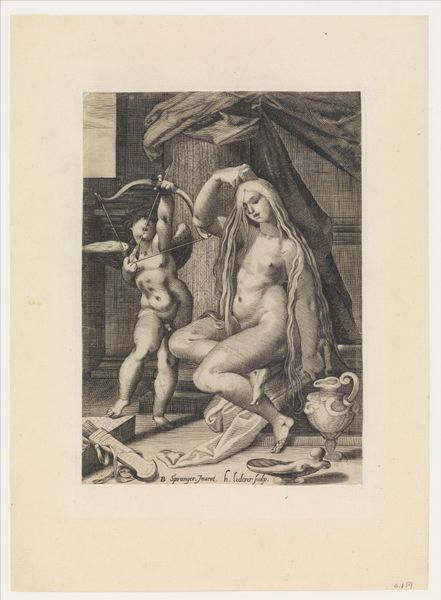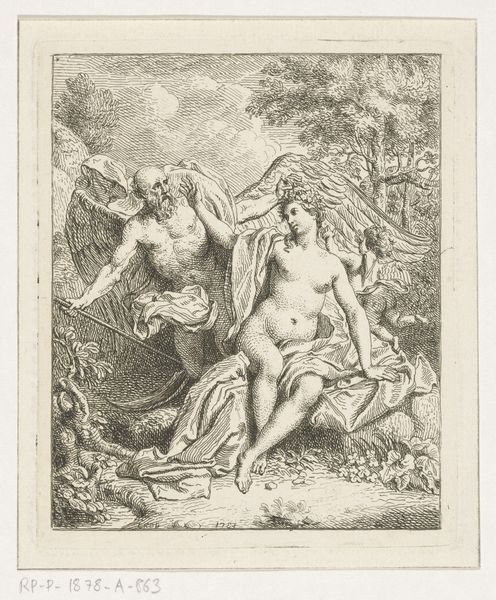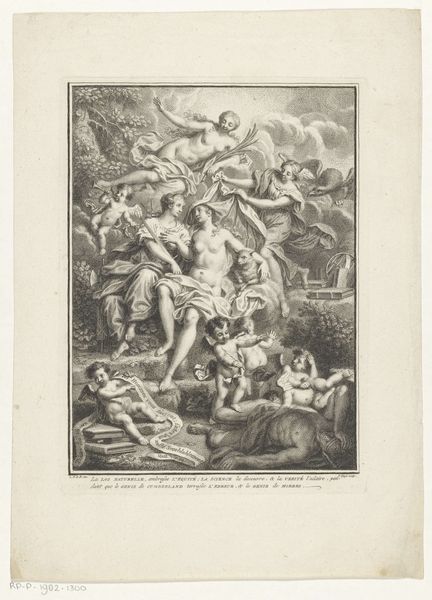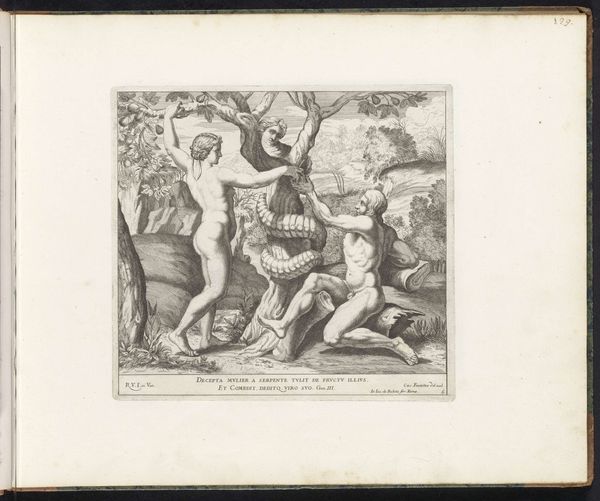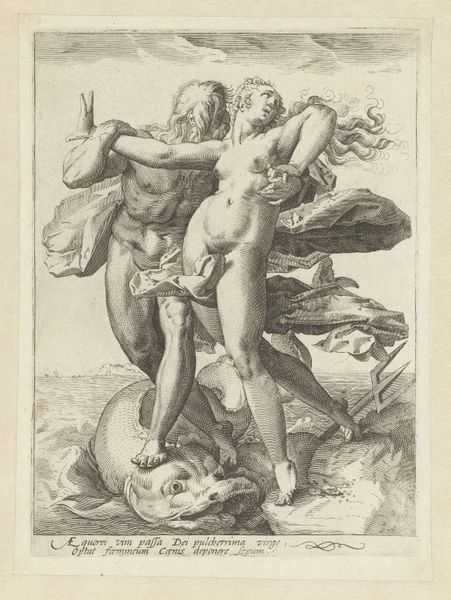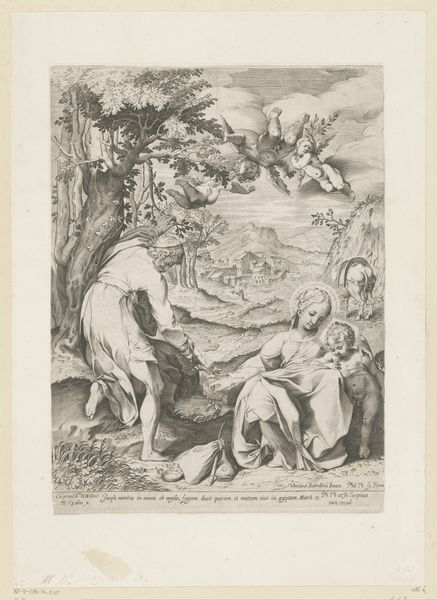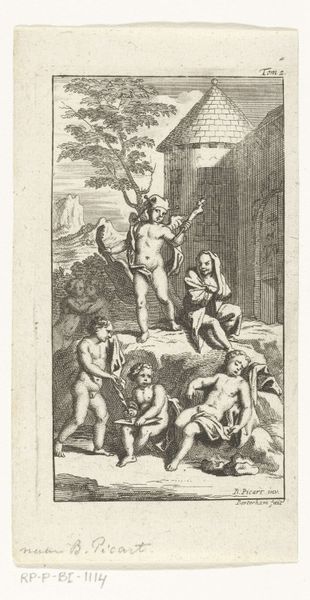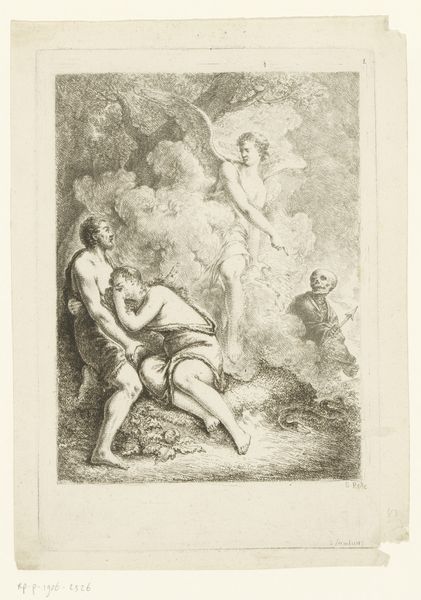
print, engraving
#
allegory
#
baroque
# print
#
old engraving style
#
traditional media
#
figuration
#
history-painting
#
nude
#
engraving
Dimensions: height 328 mm, width 251 mm
Copyright: Rijks Museum: Open Domain
Louis de Châtillon made this print, Leda and the Swan, in the late 17th or early 18th century. The medium is etching, a printmaking process that uses acid to corrode lines in a metal plate, which then takes ink. The character of an etching is all about the line. Look closely, and you can see how Châtillon used different densities and thicknesses to create tone and shadow. The relatively soft, blurred quality of the line also gives the image a sense of atmospheric depth. It's easy to take prints for granted, but they were absolutely vital to the circulation of images before photography. Etchings like this one allowed artists to disseminate their ideas widely, and for collectors to have access to art without commissioning a painting. The making of a print like this demanded not only artistic skill, but also technical knowledge and physical labor. In its own way, it was a form of mass production, democratizing art for a wider audience. So, next time you look at a print, remember that you're seeing the result of a complex intersection of art, craft, and technology.
Comments
No comments
Be the first to comment and join the conversation on the ultimate creative platform.
